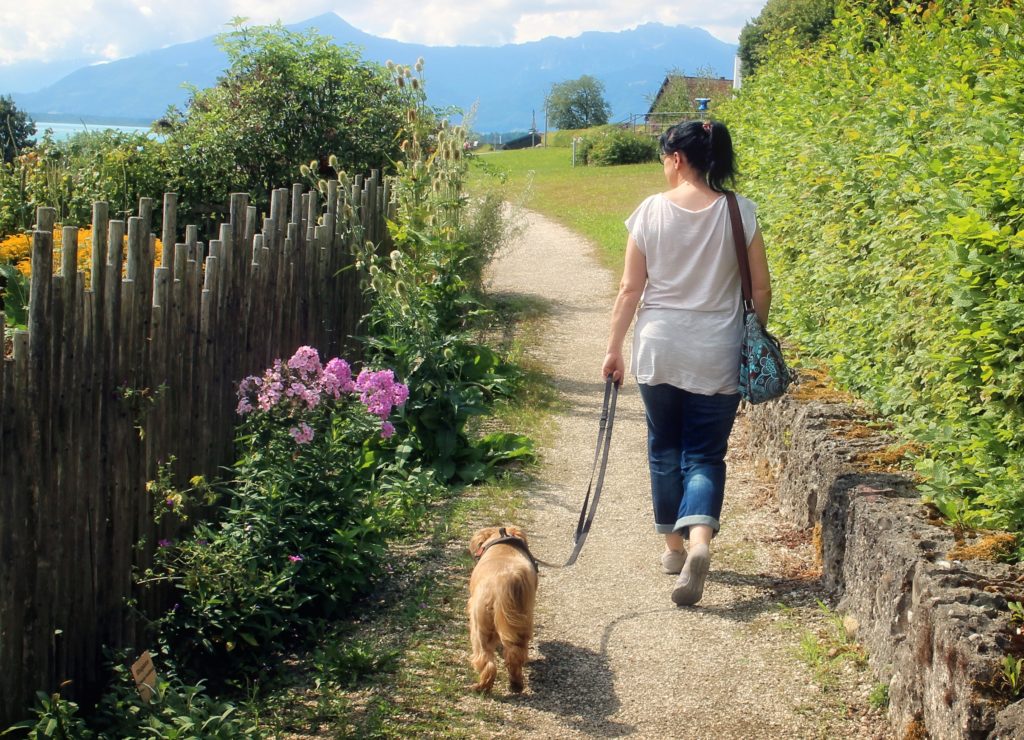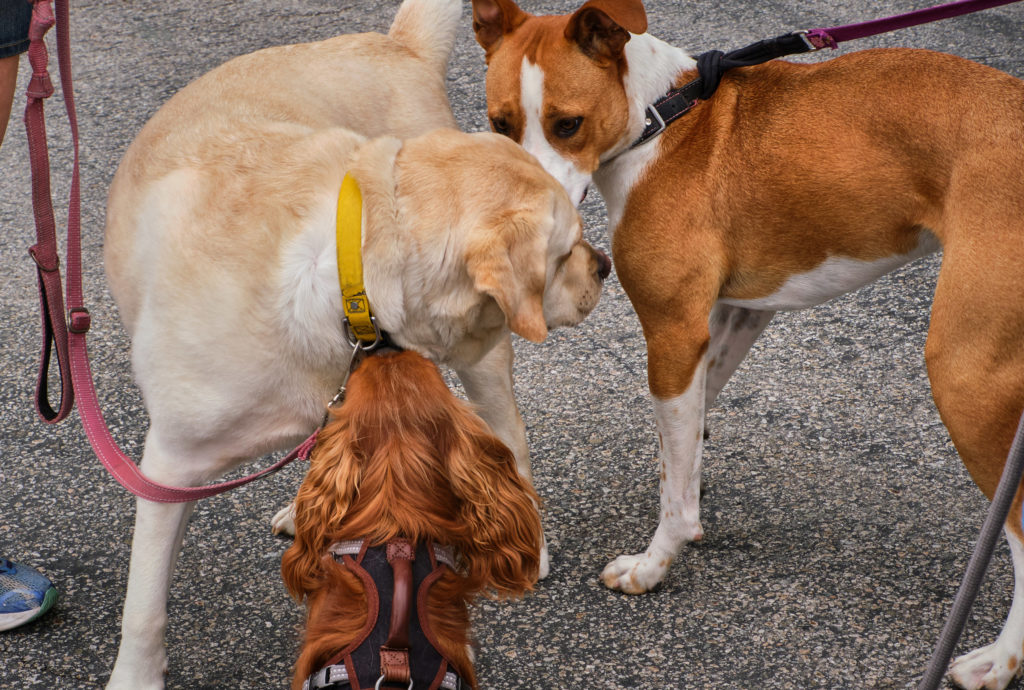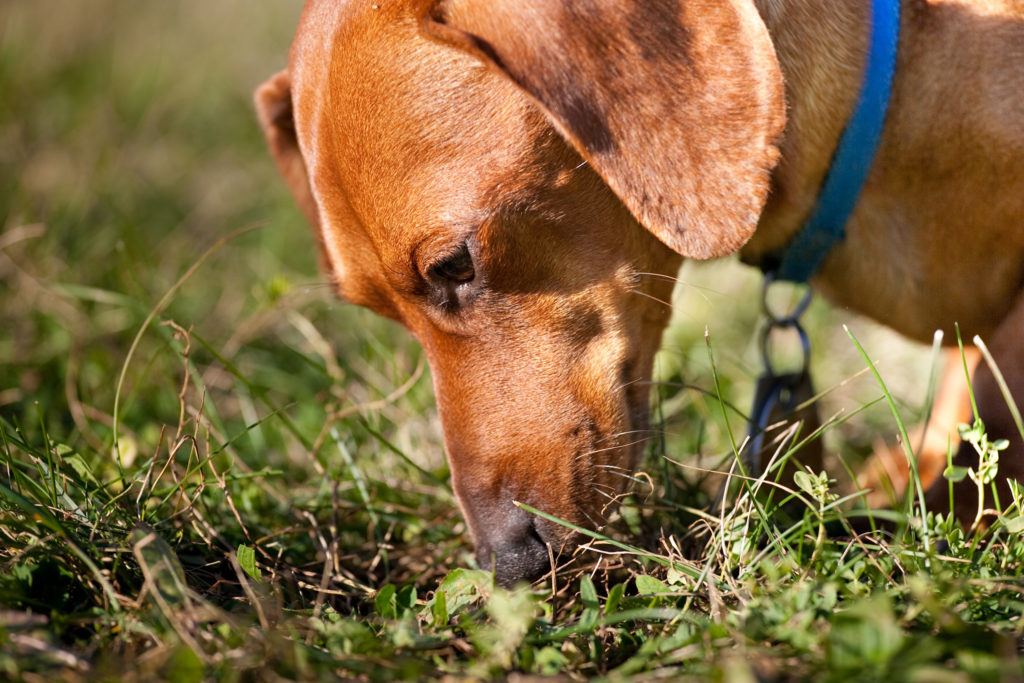
March 15, 2020 | Tags: advice, dog walking, exercise, tips
When your plugged-in, constantly-on-the-go lifestyle has you on the fritz, it feels impossible to take your dog out for a leisurely stroll. According to a recent study, 33 percent of pet parents rarely walk their pups. Only half pound the pavement with them each day. While it’s not always possible to walk your dog for hours at a time, you should be taking a long walk at least a few times a week.
Can’t commit? Consider hiring a dog walking company to give your pooch a daily dog walk. Many pet parents who are short on time find a daily dog walking service greatly improves their dog’s happiness, behavior and well-being. Whether you’re a responsible pet parent or a professional dog walker who works for a pet care company, here are seven reasons to hit the trail with your favorite dog:
#1: Improve Health & Manage Weight
According to the Association for Pet Obesity Prevention, 56 percent of dogs in the U.S. are overweight or obese. If yours is one of them, he’s at risk for bladder cancer, skin infections, heart disease, and diabetes. The Department of Family & Consumer Studies, has found dog owners walk at least four hours per week while non-pet owners squeak in an hour. Dog walking can lower your weight by five percent and your dog’s by 15 percent. It also improves your cardiovascular fitness, lowers your blood pressure, and builds your bones. “Mentally, getting outdoors and having a routine, as well as the release of endorphins from light exercise, reduces anxiety, depression, and seasonal affective disorder,” says Li-ran Bukovza, founder of Puppy Tip.

#2: Train Your Dog
Has your dog downed a whole frozen turkey or started plowing your flower bed? If so, he’s getting rid of pent-up energy. Walks are the perfect opportunity to curb his bad behavior while practicing obedience commands. “It is one thing for him to be able to ‘sit’ in the middle of your living room but a whole different story in a busy park,” says Steffi Trott, founder of SpiritDog Training. “By taking your training on the road, you’re able to proof commands and teach your dog that anywhere, anytime, can be training time.”
Trott suggests frequently stopping your dog on walks and giving him obedience commands like “come” and “watch me”. Consider stopping at street corners. Have him “sit” and then “down”. If he gets up, use the verbal correction “no” and command him again. Tired of leash tug-of-war? Only let your dog walk when his leash is loose. Stand still if he pulls and move forward when he comes back to check on you, letting the leash fall slack or changing direction every time he gets ahead of you.
#3: Make New Friends
Dogs can open the door to a new universe of people. “They’re fantastic “social lubricants” — a term that references anything that makes interacting with other people easier,” says Dr. Jennifer Coates, who serves on the advisory board for Pup Life Today. “People are more likely to strike up a conversation with you if you’re out for a walk with your dog rather than walking on your own or with other people. This can be especially beneficial for those who suffer from loneliness or depression.”
Dr. Beth Frates is the medical editor of Get Healthy, Get a Dog, a Special Health Report from Harvard Medical School. When she first adopted her Goldendoodle named Reesee, she started meeting up with 15 other women and their pooches at a local dog park. While the dogs honed their social skills, the women talked. Sometimes the relationships went no further than knowing someone is “Archie’s mom.” Other times they budded into life-long friendships.

#4: Strengthen Your Relationship
“Dogs have changed a lot since they’ve been wolves, but not so much that they don’t still enjoy traveling with their pack,” Trott says. While he wants you to step up as the alpha, you’ll have to earn his trust, loyalty, love, and respect. Regular one-on-one time can strengthen and deepen your bond. If your dog is timid or fearful, daily walks can give him structure and stability. That level of predictability also can skyrocket his self-confidence.
Already have an unbreakable bond? Insert some surprise into your dog’s everyday lives. He’ll realize that they need to stay in tune with you. Instead of walking the same route every day, try new paths and vary your walk times. Does your dog have a favorite post-workout treat? Let him have a peanut butter biscuit or turkey loaf instead. If Saturday is your designated “walk in the park” day, rock your dog’s world and go on Saturday and Sunday.
#5: Explore the Environment
“Even if your pet is unable to walk, there are still benefits to providing outdoor time,” Stultz-Hairston says. “Using a stroller to take him on a walk engages his senses outside of the home, as he experiences the sights, sounds, and smells of the outdoors.” Is your dog a drive-by sniffer, eager to inhale as many new scents as possible? Or does he hunker down and dedicate himself to smelling one location with great intensity?
Dogs of all ages should enjoy regular sniff walks. “Sniffing instantly lowers your dog’s heart rate, especially if he tends to be overly excited, reactive, or nervous,” Trott says.
The part of your dog’s brain that’s devoted to exploring smells is 40 times larger than yours. If you have your dog “heel” for the entire walk or pull him away from every lamppost, it’s like returning a gripping mystery novel to the library before finding out whodunit.

#6: Provide a Potty Break
Dogs normally poop once or twice a day. If your pup is constipated or starts going in the house, try two short walks. Some dogs move around during bowel movements because it aids in elimination. Potty breaks aren’t just about eliminating waste. They’re about communication too. Besides marking their territories, dogs use urine or feces as calling cards. Dogs’ anal glands give off a musky smell when they’re scared. So sometimes, poop can alert other dogs of danger. Urine is basically social media for dogs. Where you might check Twitter for breaking news, dogs want to check the popular pee spots to discover the sex, age, and health of their followers.
#7: Make Walking a Habit
Trott recommends getting a step counter and setting realistic goals. “In week one, walk your dog for 2,000 steps every day,” she says. “In week two, walk him for 3,000 steps every day, and so on, until you reach about 6,000 steps.”
Is your dog overweight or obese? If so, he is at higher risk for joint damage and osteoarthritis. It causes pain, inflammation, and bone spurs. According to the American Journal of Veterinary Research, 20 percent of middle-aged dogs and 90 percent of seniors have osteoarthritis in one or more joints.
If your older dog is battling the bulge, try five-minute walks a couple of times per day. “If he starts panting, limping, or lying down, you’ve overdone it and should dial it back,” Trott says.
Fetch! Pet Care is here to support your efforts in giving your dog the care he deserves. Call us for daily dog walking pet care service, we’d love to help you and your pooch out!
This blog was written for Fetch! Pet Care by Cherese Cobb.
Source: Read Full Article